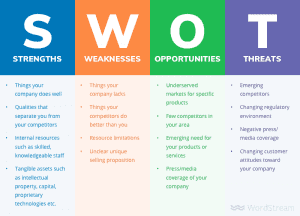We are already 3 weeks into the New Year, have you already broken all of your New Year’s resolutions? Or failed to even set any? If you have, you are part of the majority. Studies show that the rate for failing New Year’s resolutions is around 80%.

The most common New Year’s resolutions are focused more on personal goals such as be healthier & exercise more, or be nicer to people or give more to charity. But what about at work? Setting goals for the year is the hallmark of good business everywhere!
Step One: Reflect
It might seem obvious, but many teams forget to take the time to review the year that was. Psychotherapist Esther Perel states that the New Year is a great time to be forward-thinking about who you want to be; but it’s also a great time to look back at what you’re ready to let go of. Put simply, the best way to set goals for the year ahead is to go back & reflect on the previous year i.e. what worked well & what wasn’t so successful.
If you’re unsure where to start, performing a simple SWOT analysis of your business will give you plenty of information to get going. We’ve included a template from Wordstream as a guideline below, however there’s an abundance of information online about performing a SWOT analysis:
Step Two: Identify Your Goal & Purpose
According to the famous Tony Robbins, there are two key questions that you need to ask yourself for compelling goal planning: identify your goals & identify your purpose.
- Identify Your Goals: What do you really want? What is the exact objective you desire? A promotion at work? To take up daily meditation? In order to set achievable goals, you need to have a clear outcome in mind.
- Identify your purpose: Why do you want to achieve this goal? What will it bring you? Will that promotion give you the financial freedom you desire? In order to keep your goals, you need to ask the right questions and seek real change in your life. If you know what you’re moving toward, you’ll find ways to make it happen by learning how to set goals.
Step Three: Set SMART Goals
You may have already heard of SMART goal setting as it is so widely used as a successful guideline for goal setting.
See below:
Specific
Measurable
Attainable
Relevant
Time Bound
Set Specific Goals
Your goal must be clear and well defined. Vague or generalized goals are unhelpful because they don’t provide sufficient direction.
Set Measurable Goals
Include precise amounts, dates, and so on in your goals so you can measure your degree of success. If your goal is simply defined as “To reduce expenses” how will you know when you have been successful? In one month’s time if you have a 1 percent reduction or in two years’ time when you have a 10 percent reduction? Without a way to measure your success you miss out on the celebration that comes with knowing you have actually achieved something.
Set Attainable Goals
Make sure that it’s possible to achieve the goals you set. If you set a goal that you have no hope of achieving, you will only demoralise yourself and erode your confidence.
Set Relevant Goals
Goals should be relevant to the direction you want your life and career to take. By keeping goals aligned with this, you’ll develop the focus you need to get ahead and do what you want. Set widely scattered and inconsistent goals, and you’ll fritter your time – and your life – away.
Set Time-Bound Goals
Your goals must have a deadline. Again, this means that you know when you can celebrate success. When you are working on a deadline, your sense of urgency increases and achievement will come that much quicker.
SMART guideline via MindTools
Happy New Year and Good Luck!





